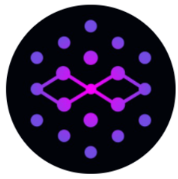
Introduction to Bitlayer
Bitlayer is the first major project to implement BitVM technology. Conceptually, the Bitlayer platform is similar to an optimistic convolutional network, a popular Layer 2 solution. BitVM is the main processing engine of Bitlayer, supporting smart contracts. Additionally, due to its Turing completeness, Bitlayer supports several other VMs, including EVM, SolVM, CairoVM, and MoveVM.
The support of EVM is crucial given the widespread adoption of such computational engines in the blockchain industry. Thanks to its 100% EVM compatibility, Bitlayer can efficiently integrate solutions originally designed for Ethereum and its vast DApp network.
As a convolution-like Layer 2 solution, Bitlayer processes and batches off-chain transactions, thus reducing the load on the underlying Bitcoin Layer 1 chain. Compared to direct transfers using the underlying Bitcoin network, the Bitlayer network offers excellent scalability, speed, and transaction costs. As of August 25, 2024, the Bitlayer block confirmation time is just 3 seconds, and the median gas fee is about 10 cents, a stark contrast to Bitcoin’s 10-minute block processing time and recent miner fees of $0.50 to $1.
Innovative technologies used by Bitlayer include the cautious log contract (DLC) execution framework. DLC allows two parties to design pre-agreed conditions for contract execution and then sign the mediation blockchain oracle entity. Subsequently, both parties can execute transactions (e.g., exchanging payments based on the signed conditions on the chain).
Compared to standard Layer 2 solutions like the Lightning Network that use Bitcoin for payment exchanges, DLC enables the design and expansion of complex and private payment protocols while reducing the risk of counterparty fraud.
How Bitlayer Works
Transactions on the Bitlayer platform are processed off-chain and then organized by Sequencer nodes for further validation. Sequencers are typically used in optimistic rollup solutions to order transaction batches. Bitlayer uses a layered virtual machine (LVM) to process transactions compatible with different VMs.
The transactions organized by the sequencer are validated through the interaction of two key entities: the validators and challengers. As previously noted, Bitlayer is based on optimistic rollup technology. However, zero-knowledge (ZK) proof technology can also be used to validate transactions on the platform. Validators submit transactions from Layer 2 to Layer 1, and if challenged, they provide ZK proofs for those transactions. Challengers are responsible for monitoring transactions and submitting fraud proofs when detecting malicious or erroneous transactions. ZK proofs submitted by validators are used to resolve challenges and confirm transaction validity.
Therefore, while the actual transactions are supported by ZK proofs, the process of questioning their validity is inherently optimistic. In other words, transactions are considered valid unless challenged by a challenger. A system of monetary penalties and rewards is set up to ensure that validators and challengers act correctly and fairly on the network. For example, validators are required to stake a certain amount of BTC to participate in processing activities. If a validator’s ZK proof is successfully challenged, they may lose their staked funds.
Bitlayer Architecture
Layered Virtual Machine (LVM)
Bitlayer’s LVM supports the execution of smart contracts via EVM and generates the latest state and ZK proofs within Bitlayer. It is fully compatible with the default programming language EVM and Solidity used for Ethereum DApps. LVM ensures that the programming code generated by Solidity can be adjusted and interpreted by the Bitlayer processing environment. According to documents available as of late August 2024, LVM supports Solidity, up to version 0.8.25, which was released in March 2024. The project team has announced plans to support future versions.
Sequencers
Sequencer nodes are critical network participants in Bitlayer, primarily responsible for batching, organizing, and submitting transactions for further processing by validators and challengers. Bitlayer’s sequencers ensure optimized transaction batching, keeping the platform’s impressive 3-second block time.
Asset Bridging
Bitlayer’s asset bridge is a component of the platform that ensures secure and efficient asset transfers between Layer 2, Bitlayer, and the Layer 1 Bitcoin network. This bridge uses the aforementioned DLC contract model to ensure smooth asset movement across the ecosystem layers.
Key Features of Bitlayer
Layer 2 Smart Contract Functionality
Thanks to BitVM and LVM, Bitlayer can smartly execute contracts at the Layer 2 level, which can adapt to EVM-compatible computations. The ability to process smart contract code on Layer 2 reduces the load of transactions on the underlying Bitcoin Layer. The platform’s Turing-completeness and its EVM compatibility mean that the Layer 2 network can handle almost any complexity of DApp. Bitlayer supports DApps in DeFi/BTCFi, gaming, infrastructure, and other fields.
Cross-Chain Transactions
Bitlayer’s asset bridge can be used for cross-chain transactions. This bridging technology relies on BitVM and the automated DLC contract model Optimistic-DLC (OP-DLC) implemented by Bitlayer. Previously, we noted that the DLC framework relies on pre-agreed transaction signing between parties. With OP-DLC, the oracle functionality is executed by the BitVM consortium nodes. The BitVM consortium is a network of nodes responsible for overseeing Layer 2 transactions.
Bitcoin Security and Decentralization
Bitlayer benefits from the security and decentralization provided by Bitcoin. The Bitcoin blockchain is one of the most secure blockchains in the cryptocurrency industry, and some observers argue that it is the most secure decentralized network. Bitcoin’s block validation model, Proof of Work (PoW), is generally considered more secure than the Proof of Stake (PoS) model used by Ethereum and most other smart contract blockchains.
In addition to the highly secure block validation method, Bitcoin also has one of the largest mining node networks, making it a highly decentralized environment. As of July 20, 2024, the number of Bitcoin miners has surpassed 1 million. Bitcoin’s highly decentralized nature contributes to its typical security status.
Thus, Bitlayer combines the processing power of complex smart contracts with the security features of the underlying Layer 1 Bitcoin chain.
Bitlayer Ecosystem
DApp Hub
You can explore the Bitlayer DApp ecosystem using its DApp Hub portal, which allows browsing available DApps by categories such as DeFi, Launchpad, Gaming/NFT, Infrastructure, etc. The platform supports over 100 DApps, and the Bitlayer leaderboard ranks them based on Total Value Locked (TVL), transaction volume, and popularity.
Bitlayer holds leaderboard competitions and rewards ecosystem projects through the Bitlayer Gems reward system. Bitlayer Gems virtual points will be converted into the platform’s native token BTR during future Token Generation Events (TGE). Projects will be rewarded based on their achievements in four areas: the number of valid transactions, active user addresses on the network, TVL, and popular votes on the leaderboard.
Bridge-to-Earn
Bitlayer collaborates with Meson Bridge to easily transfer three major assets (USDT, USDC, and ETH) from Ethereum to the Bitlayer mainnet. Meson’s bridging solution focuses on stablecoin transfers. Using the Bridge and Yield section on the Bitlayer homepage, you can access the bridge and quickly transfer any of the supported assets to Bitlayer.
Bitlayer vs. Ethereum
Although 100% EVM compatible, Bitlayer differs in several key ways from Ethereum, and these differences may convince cryptocurrency users, developers, and operators to choose the platform over the world’s largest smart contract chain. Here are the major distinctions between the blockchain environments:
-
Bitlayer’s miner fees are lower than Ethereum’s. Ethereum typically sees its miner fees surge into the double digits during network congestion. In contrast, Bitlayer’s miner fees tend to remain at a lower level, thanks to efficiency mechanisms like execution optimizations.
-
Bitlayer offers higher security. Thanks to Bitcoin as its Layer 1, Bitlayer can be considered more secure than Ethereum.
-
For developers and DApp operators, Bitlayer opens the door for users to access BTC-based funds, which hold a larger share of cryptocurrency funds than ETH-based funds or Ethereum tokens. While ETH is used more actively in DApp sectors, BTC holds a larger total amount of cryptocurrency funds. As of August 2024, BTC remains a dominant cryptocurrency, accounting for over 50% of existing crypto funds. Bitlayer provides a platform for accessing these large funds, many of which have yet to be invested in the DApp sector.
-
Bitlayer’s current DApp ecosystem is more limited than Ethereum’s. Bitlayer currently supports over 100 DApps, whereas Ethereum has over 4,000 blockchain applications.
Relevant Navigation


Ape Portal

Synapse Protocol

Orbiter

Meson

MemeBridge

